Hugging the Adriatic Sea on the western edge of the Balkan Peninsula, Croatia sits at a rare intersection. Here, unspoiled geography meets ancient, but living, culture. It’s no wonder that traveling to Croatia is on the top of many adventure seekers lists.
Mountains run along a coastline guarded by over one thousand islands. Repurposed palaces and millennia-old Roman street plans anchor urban centers. Hillsides are laced with terraced vineyards and olive groves, their harvests to be paired with boat-to-table seafood hauled in by fishermen in skiffs. And lakes and rivers crisscross the landscape, connecting pristine national parks.
If a trip to Croatia is calling you, this guide will highlight the following:
- Why Visit Croatia?
- The Top Places to Visit in Croatia
- The Top Outdoor Activities in Croatia
- How to Plan Your Trip
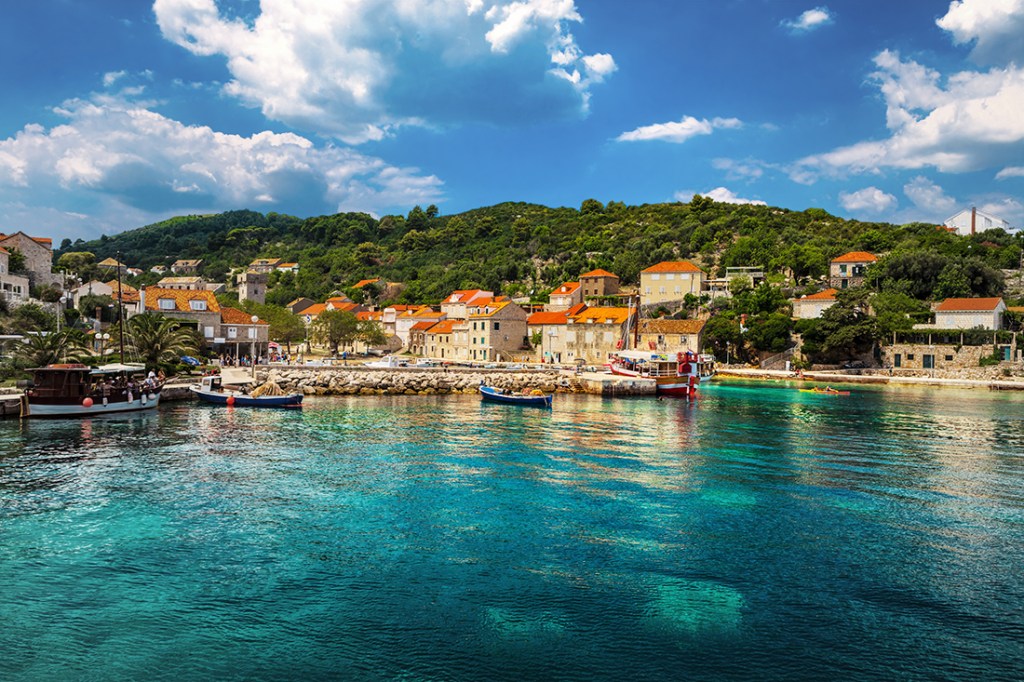
Ready to dive in? The island of Sipan, southern Dalmatia.
“Croatia is a melting pot of history and culture; a dreamy blend of heritage, cuisine and tradition that can be seen in its architecture and lifestyle,” says Janel Jensen, REI Adventures program coordinator. She adds: “You get everything from incredible travertine waterfalls and crystal clear lakes and rivers to primeval forests, quaint villages, thousands of islands with beautiful beaches and aquamarine water, ancient walled towns and the Dinaric Alps.”
The country, once a republic within Yugoslavia, has been ballyhooed in recent years for its islands and the walled city of Dubrovnik. However, a case can be made that this southeastern European nation, stretched between Italy and Slovenia to the north and Montenegro in the south, is among the continent’s most underrated adventure destinations. No matter the mode of transport—bicycle, kayak, sailboat or boots—travelers should expect the unexpected in Croatia.
Why Visit Croatia?
In fact, the land of “1,000 islands” has more than 1,200. This small country, the size of West Virginia, possesses one of Europe’s longest coastlines, measuring around 4,000 indented miles. From this perspective, if your only activity here was ferry-hopping between the mainland and the 50 or so inhabited isles, you’d be forgiven. But there is so much more to Croatia than sand and sun. Explorers will find a giant natural playground.
For instance, guidebooks and blogs rightfully extol Dubrovnik’s virtues. But after taking in the views atop the walls, kayakers will want to escape the crowds to paddle the coast of Dalmatia, as Croatia’s southern half is called. This same stretch, framed by cliffs overhanging the mainland shore and islands bobbing in the blue sea, will beg to be kiteboarded or sailed. And as the sun disappears into the Adriatic, you’ll likely be tempted to throw anchor and stay a little bit longer.
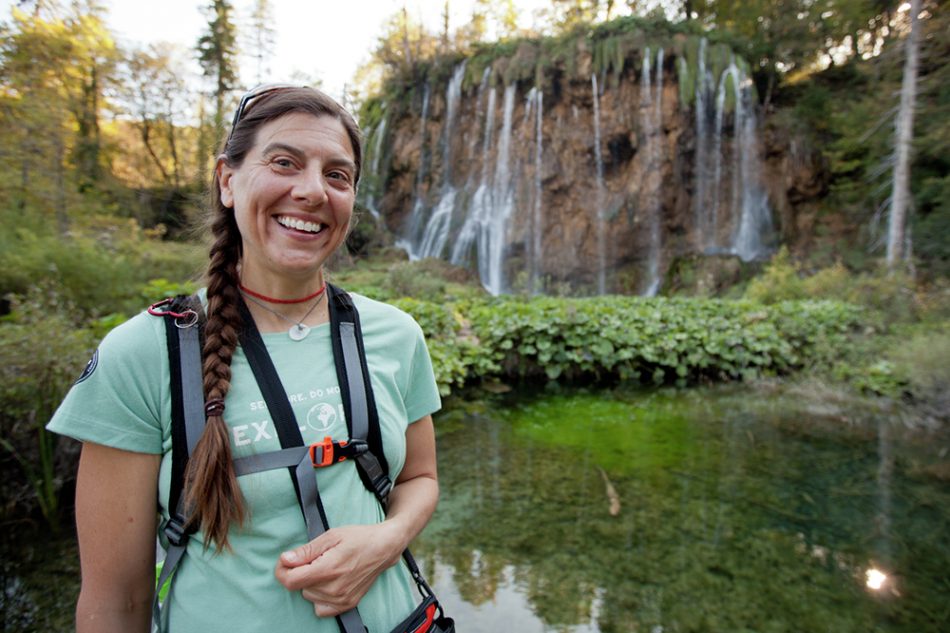
A traveler takes in the many waterfalls of Plitviče Lakes National Park.
Further inland, the Dinaric Alps provide a different lens. Thru-hikes, treks and climbing routes abound, especially in the Velebit Range, where mountain huts connect excursions between peaks and hidden villages. You can go entire days here without seeing another tourist—only hospitable local mountaineers, willing to share homemade schnapps and trail stories.
Eight national parks bridge the mountains and sea. The parks also provide up-close experiences with uninhabited islands, disappearing lakes, isolated canyons, mountainside botanical gardens and populations of bears, lynx and wolves. These protected areas also remind us that Croatia’s secret is equilibrium: a balance of precious resources, preserved heritage, historic cities and agricultural prowess. This is not by happenstance. The country’s adventure, culture and environment are all closely linked; this boomerang-shaped nation has made a career of living on the edge.
Croatia’s geographical edge—the Adriatic shore’s mountainous cusp—has attracted an array of cultures since time immemorial. Here, where the East meets the West, empires came, clashed and compromised. Greeks, Romans, Venetians, Hapsburgs, Ottomans and Austro-Hungarians staked claims and were pushed out, but left enduring legacies.
Visitors feel these legacies with museums, monuments, ruins and ancient architecture in cities like Zagreb, Croatia’s capital; Pula, on the Istrian Peninsula; Zadar, in northern Dalmatia; and Dubrovnik, at the country’s southern tip. They taste the area’s legacy through ingredients that are grown, cooked, dried, cured, pressed and poured into dishes, liqueurs and wines. The ingredients that became the region’s culinary anchors are now the country’s gourmet calling cards.
The Top Places to Visit in Croatia
Croatia is a fortuitous intermingling of culture and adventure. From the capital of Zagreb to southern Dalmatia to the northwest’s Istrian Peninsula, outdoor pursuits mix with history and gastronomy. The country’s eight national parks stitch these areas together, and provide a natural showcase.
Zagreb
Zagreb has a population of around 700,000, but feels much smaller. The majority of the city’s historical sites are tightly clustered around a perched, medieval center that rolls down to Lower Town: a series of parks, developed during Austro-Hungarian rule, enveloping neo-baroque, secessionist and modernist architecture. Dozens of museums and galleries, theaters, traditional and international restaurants, boutiques, cafes, lounges and clubs are scattered throughout this walkable city in the Dinaric Alps foothills.
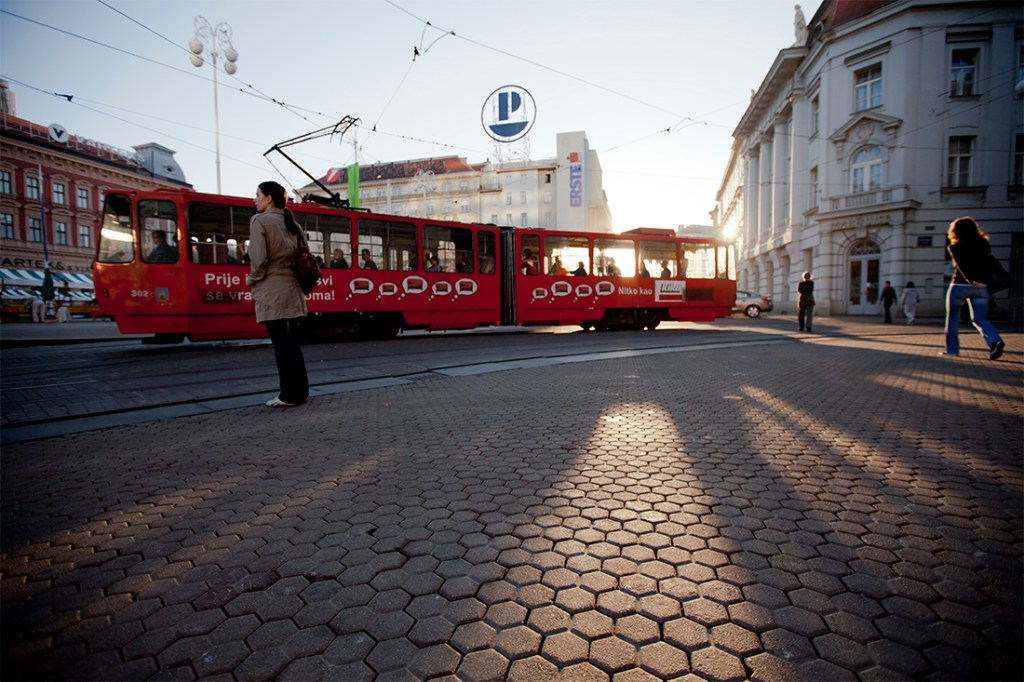
Despite the bounty of natural offerings in Croatia, the country’s urban areas hum at the pace of the 21st century.
Historic Center
For much of Zagreb’s nearly 1,000-year history, the area consisted of two hilltop settlements. Gradec—also known as Gornji Grad, or Upper Town—was (and is) the governmental, merchant- and tradesmen-based hub. Kaptol centered on the Catholic cathedral and the clergy who served it. In 1850, the two unified to form Zagreb.
Gradec, a tangle of cobblestone streets, is the site of Croatia’s parliament. The district is also home to the tile-roofed, Romanesque and Gothic St. Mark’s Church, dating to the 13th and 14th centuries. A two-minute walk leads to the Kamenita Vrata (stone gate), the medieval settlement’s last remaining city gate.
The Cathedral of the Assumption of the Blessed Virgin Mary is still Kaptol’s anchor, one of the region’s largest churches, and Zagreb’s chief attraction. The cathedral has evolved radically over the last 800 years to its present neo-Gothic look. Today, the behemoth includes twin, 354-foot bell towers.
Tkalčićeva Street
The middle ground between the hilltop settlements is Tkalčićeva Street (pronounced Tuh-call-chee-chay-vah). Once a stream, and the site of clashes between the districts, today it’s a pedestrian-only avenue lined with cafes, restaurants and shops. Hard to say but easy to find, locals and tourists congregate and stroll here day and night.
Dolac
Located above the main square, Dolac is the central outdoor “green” market. Open daily, vendors pack into this open area to sell fruits, vegetables, nuts, honey, cheeses and liqueurs under a sea of red umbrellas. There are also indoor spaces dedicated to meats and fish. Besides edibles, stands sell souvenirs, such as soccer jerseys and wooden toys.
Lower Town
Zagreb’s Lower Town, or Donji Grad, extends from the main square, called Ban Jelačić Square, to the neoclassical train station, opened in 1892. In between, travelers will find the most important thoroughfare and shopping street, Ilica, and the so-called “Green Horseshoe” series of parks, designed in the 19th century. Lower Town highlights include the Croatian National Theater—built in 1895, it stages ballet, opera and dramatic productions—and the Botanical Garden. On Saturdays, all of Zagreb promenades along Ilica and the many cafes radiating from this main drag.
Museums
With more than 50 museums and galleries showcasing art, history and culture, Zagreb claims to have the “biggest number of museums per capita in the world.” In Gradec, the Zagreb City Museum is the place to learn the capital’s history. The Museum of Broken Relationships, also in Upper Town, is dedicated to lost love. In the Lower Town, the Archaeological Museum displays the prehistoric, ancient and medieval periods exhibitions. Just south of the Sava River, the Museum of Contemporary Art houses one of the region’s largest collections.
Istria
Istria, in the country’s northwest corner, is Croatia’s gourmet pantry. A popular destination for Central Europeans, the triangular peninsula—hanging between Italy, Slovenia and Croatia—mixes ancient coastal towns, vineyards and olive groves. The most famous gastro delight produced in Istria is truffles. Don’t fret, adventure travelers will have ample chances to work off their culinary indulgences with hiking paths and cycling routes crisscrossing the landscape.
Istrian Cities and Towns
Noteworthy towns and cities lie around every hillside on the peninsula. The perched villages of Motovun and Grožnjan both have medieval hearts. In the forests between, Istrian dogs sniff out some of the world’s best truffles. On the coast, the town of Poreč is home to the UNESCO-protected, 6th-century Euphrasian Basilica.
To the south, the Italianate Rovinj, founded some 1,500 years ago, is an artist’s (or a shopper’s) dream with boutiques lining cobbled alleys leading to the hilltop Church of St. Euphemia. At the peninsula’s tip, Pula, Istria’s largest settlement, has a population of nearly 60,000 and 3,000 years of history. A few main sights include the Pula Arena, a Roman amphitheater built in the first century AD; the Forum, from the first century BC; and the Temple of Augustus, constructed around the year zero.
Dalmatia
For many, this is Croatia. Mountains and cliffs hang above isles that poke through the sea across the horizon. Moving from north to south across the country’s southern half, Dalmatia’s highlights include the ancient mainland cities of Zadar, Split and Dubrovnik. These three also act as regional, island-hopping hubs.
Zadar
More than 2,400 years old, Zadar began to take its current shape during the Roman Empire. Today, the original street grid remains, as does the forum, from the first century BC. Locals congregate in sunny cafes along Zadar’s avenues to argue politics, fashion and sports.
Inside the peninsular old town, don’t miss the city walls, built by the Venetian Republic and placed on the UNESCO World Heritage List in 2017, and the Church of St. Donat, which dates to the ninth century AD. On the western tip, the Sea Organ, constructed in 2005, is a series of steps jutting into the Adriatic. As water and air rush under the organ’s stone stairs, pipes produce an otherworldly symphony.
For active travelers, Zadar provides a perfect headquarters. The city is a 25-minute ferry ride from the tranquil islands of Ugljan and Pašman. The city is a 1.5-hour drive from four adventure-laden national parks: Plitvice, Paklenica, Kornati and Krka.
Split
Split was built on the remains of a Roman emperor’s retirement villa. Emperor Diocletian built his palace, a UNESCO World Heritage site since 1979, over a 10-year period beginning in the year 293 AD. Occupation of the historic town passed between the Venetian Republic, Napoleon, the Austro-Hungarian Empire and Yugoslavia before Croatia.
Today, Dalmatia’s largest city—with a population of about 180,000—is a stone-street maze crowded with bistros, shops and bars. Near the palace complex, with its Temple of Jupiter and the Cathedral of Saint Domnius, don’t miss the Meštrović Gallery, dedicated to Croatia’s most famous sculptor, and the leafy Marjan Park with its seaside hiking and walking paths.
Split is the main ferry port for the popular central Dalmatian isles of Brač, Hvar and Vis. Brač, the closest to the mainland, possesses one of the country’s most photographed beaches: Zlatni Rat, or Golden Horn, which juts into the sea next to the town of Bol, and provides kiteboarders a platform to ride Adriatic winds.
Just beyond, Hvar, settled by Greeks some 2,400 years ago, celebrated 150 years of tourism last year. Long famous for its red wine, Hvar has become a haven for cyclists, kayakers, sailors and climbers. Vis, a two-hour ferry from Split, was closed to the public for decades for military purposes. Today the island is a great escape with fresh seafood and another famous beach, Stiniva.
Dubrovnik
Called the “Pearl of the Adriatic,” Dubrovnik clings to rocks above the sea at the country’s southern tip. Settled in the seventh century AD and inscribed as a UNESCO World Heritage site in 1979, its famous walls, measuring 1.2 miles long and 80 feet high, were completed in the 16th century. There are few experiences that compare to walking the ramparts (tickets cost 200 kunas, or around $31). The views of residents’ gardens and lives inside the medieval city and the glittering sea beyond are guaranteed highlights.
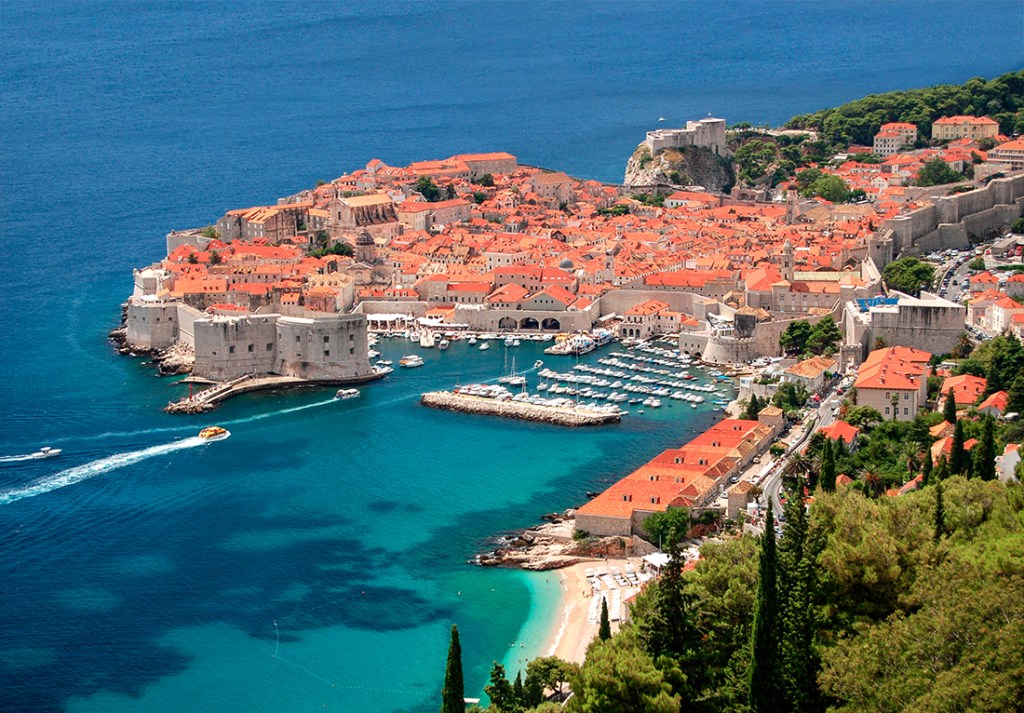
The walled city of Dubrovnik is a great place to take in some history and kick off a maritime adventure.
Visitors, however, will not be alone. Dubrovnik experienced a surge of popularity with cruise ships and its appearance on TV and in movies. Still, visitors stand in awe while walking the main, polished-limestone avenue, Stradun, which extends from west to east between the Pile and Ploče gates. Visit the War Photo Limited Museum, to break free of the throngs. Afterward, duck into the 14th-century Franciscan monastery and cloister for a meditative take on Dubrovnik’s culture.
Dubrovnik’s port connects Dalmatia’s southern islands. Korčula, the site of Marco Polo’s origins, is home to some of Croatia’s best wine and scores of hidden coves. Mljet’s westernmost third has been protected as a national park. And the Elaphiti Archipelago, a short ferry from Dubrovnik, is ideal for paddling in open water and between isles.
The Top Outdoor Activities in Croatia
More than 60 percent of Croatia’s 4.14 million people live in urban areas. For adventurers, this means much of the country is free of city trappings. Instead of concrete, travelers will find trails traversing mountains, routes sandwiched between cliffs and Adriatic seascapes with nothing but the tips of distant islands. From national parks to country roads, Croatia is meant to be explored.
1. Hiking and Climbing
Hiking and climbing often stay under the radar in Croatia—and that’s unfortunate. There is an off-the-grid feel to treks here. However, it is satisfying to scramble up world-class routes with sea views while the less-initiated tourists sunbathe and relax below on the lapping shores of the Adriatic.
Hiking
Plitviče Lakes National Park
All of Croatia’s eight national parks make unique and worthy stops. But, Plitviče (pronounced pleet-veet-say) has most captured visitors’ imaginations. The country’s first national park and inscribed on UNESCO’s list, Plitviče’s biggest attractions are 16 lakes—fed by rivers disappearing into the karst landscape—defined by natural travertine barriers built over millennia and connected by show-stopping waterfalls.
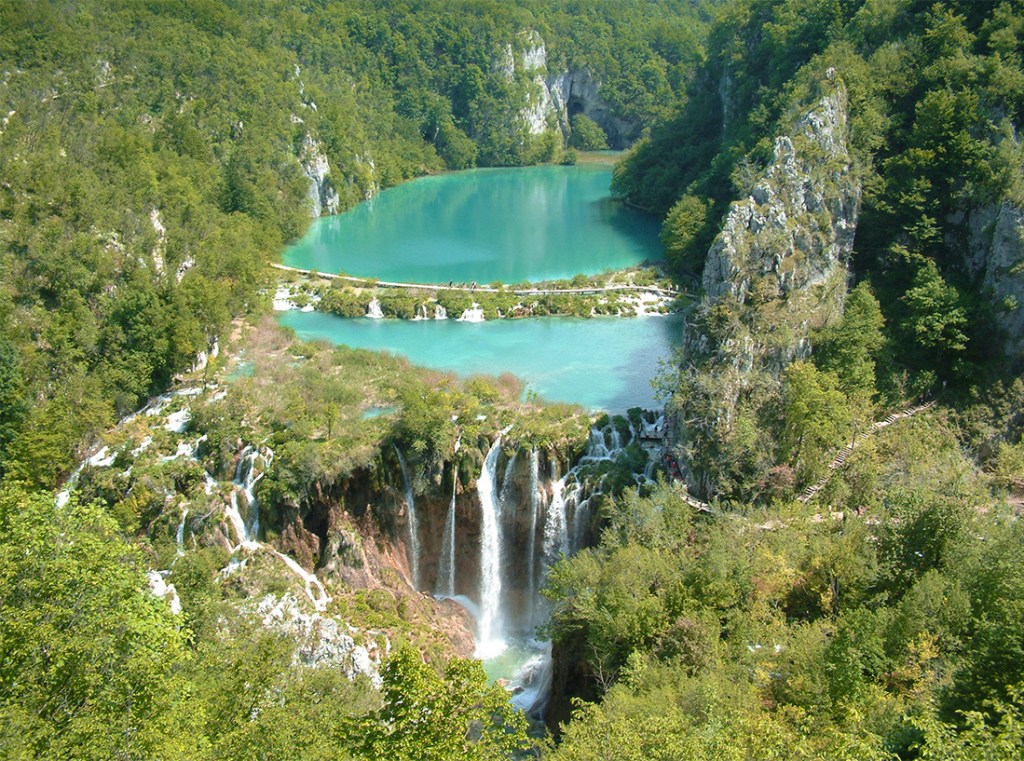
Travertine-terraced lakes dot the enchanted realm of Plitviče Lakes National Park.
After walking along the national park’s boardwalks, go off-piste for a trek into Plitviče’s backcountry. The Čorkova Bay trail starts from one of the park’s tram stops and passes the “Great Fall” on the way to the boat dock on Kozjak Lake.
Risnjak National Park
The 24.5-square-mile Risnjak National Park, tucked under the Slovenian border, is named for the rare lynx that, along with wolves and brown bears, calls this corner of Croatia home. Stay in the Schlosserov Dom mountain hut, located below Mt. Risnjak. The sunrise view from this 5,000-foot peak, above the densely forested park about 9 miles from the coast, is alone worth the visit.
Velebit Hiking Trail
The most fabled trek in the country, the Velebit Hiking Trail, is a 62-mile, weeklong thru-hike across the Velebit Range. The hike takes in some of Croatia’s most beautiful protected areas and has expansive peak-top views across the Adriatic from the northernmost reaches down to Dalmatia. The hut-to-hut experience starts in the Sjeverni (North) Velebit National Park and heads south across the Velebit Nature Park before ending in seaside Paklenica National Park.
The Via Dinarica
The Velebit trek and Risnjak National Park route are both part of the Via Dinarica hiking network, which connects the entire Western Balkans region and its highest peaks along the Dinaric Alps and adjacent ranges. The 1,243-mile route traverses Slovenia, Croatia, Bosnia and Herzegovina, Montenegro, Albania, Serbia, Kosovo and Macedonia.
Climbing
Paklenica
For more than 80 years Paklenica National Park has been the country’s climbing epicenter. Towering over the Adriatic, the park, established in 1949, spans nearly 37 square miles, has two canyons, more than 400 routes and ample faces to scale. Annually, in late spring, Paklenica hosts an international Big Speed Climbing competition. Of particular merit is Anića kuk—a 1,150-foot face with more than 100 multi-pitch routes.
Istria
After Paklenica, the Istrian Peninsula is the place to scratch that climbing itch. Some 1,200 routes are scattered across this area between Italy and Croatia. There are solid spots near the sea on both the eastern shore and the popular town of Rovinj. Perhaps the area’s best climbing is in the peninsula’s central area near the town of Buzet, where effort is rewarded with wine and truffles.
2. Kayaking, Kiteboarding and Sailing
No matter how one slices it, Croatia is a coastal country. There is a seemingly endless supply of quiet coves and open sea—depending on the mood. And with more than 1,200 islands, there is a perfect, if giant, slalom course for any craft. The Balkans’ western edge is a prime spot to pick up an aquatic skill or challenge oneself.
Kayaking
There is virtually no end to Croatia’s coastal sea kayaking spots. There are also plenty of places to rent solid gear and hire competent guides. However, be choosy with equipment and make sure tours guarantee manageable-sized groups—especially during tourism season, when operators pack numbers.
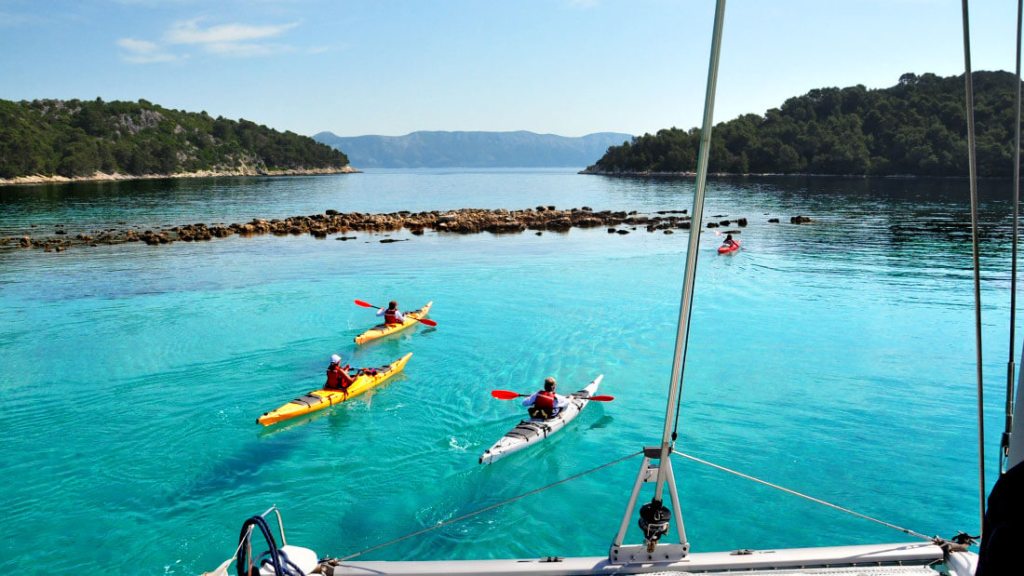
The Dalmatian Coast offers sublime sailing and paddling for those hungry for exploration.
Dalmatia is a sea kayaker’s dream. Zaton Bay, just upcoast from Dubrovnik, provides an excellent locale to get your sea legs in a sheltered body of water with islands in striking distance. Just beyond the bay, the Elaphiti Archipelago beckons. The three main islands—Kolocep, Lopud and Sipan—are well spaced to paddle point-to-point and in the open sea. Further upcoast, just off the island of Hvar, another archipelago, Pakleni, gives paddlers access to secret coves and beaches near one of the country’s most sought-after destinations in Hvar Town.
Kiteboarding
Because of channels that create wind tunnels between the mainland and islands, and turbulent thermal conditions, the Croatian coast was made for kiteboarding and windsurfing. Two spots are particularly renowned: the island of Brač, less than an hour’s ferry ride from Split, and the end (western tip) of the Pelješac Peninsula, north of Dubrovnik.
On the island of Brač, head to the town of Bol to catch the summer’s wind on the famous Zlatni Rat beach, which is headquarters for several outfitters. On the Pelješac Peninsula, the town of Viganj is within shouting distance of Korčula island. Families from around Europe set up shoreside campsites for weeks at a time to surf from morning until night.
Sailing
The classic sailing expedition begins in Split (though many leave from Dubrovnik, Šibenik, and Zadar); the journeys typically last for a week—Saturday to Saturday. From Croatia’s main coastal city, routes often weave between the central and southern Dalmatian islands, such as Brač, Hvar, Vis, Korčula and Mljet. Many travelers opt for a skipper who has local knowledge of the sea and port protocol. To captain your own ship, a maritime certification—from International Yacht Training or Royal Yachting Association, for instance—is necessary.
3. Mountain Biking and Road Cycling
Mountain trails, cliffside paths overlooking the Adriatic and secluded village roads all conspire to make Croatia one of Europe’s most unheralded cycling destinations. From one end to the other, the country boasts stunning bike touring and singletrack options.
Trans Dinarica
Extending from Slovenia through Croatia to Bosnia and Herzegovina, the Trans Dinarica is a new cross-border mountain biking route. Established in 2016, the route’s eventual goal is to network across the entire Western Balkans region, including Montenegro, Albania, Serbia, Kosovo and Macedonia. The route can be adapted for most experience levels and surfaces (touring and gravel), but it’s focused on singletrack mountain biking. The path heads through the northern, forested Gorski Kotor region before connecting with the Velebit Mountains and seaside panoramas.

A group pedals through the peaceful countryside.
Istria
The Istrian Peninsula, in the country’s northwest corner, is an adventure hub—especially for the two-wheeled variety. Routes crisscross the rolling landscape, where forests, vineyards and olive orchards provide a geometric and verdant apron for the many perched villages.
Konavle
In the far south, the Konavle region is wedged between Dubrovnik and the end of Croatia. Often overlooked by those beelining to the walled city, the area possesses some of the country’s best road cycling. Riders find routes framed by mountains separating Bosnia and Herzegovina to the northeast and Montenegro to the southeast, and sheer cliffs diving to the sea. In between, country roads roll between villages and vineyards.
How to Plan Your Trip
Because of its shape—a long coast and a stretch that spans inland—Croatia’s climate is relatively mild with both Mediterranean and continental aspects. As one would expect, the seaside stays warmer than the country’s interior, which can receive snow. For instance, the average year-round temperature in Split hovers around 60 degrees Fahrenheit, whereas year-round temps in Zagreb average 50 degrees. Regardless of the region, summers are dry and sunny across much of the country.
Best Time to Visit
It is no surprise that June through August sees the most tourists. Popular locales, especially on the islands and in destinations like Dubrovnik, can be quite crowded. The best time to visit Croatia is during the shoulder months: late April through May, and September to early November. The number of travelers is reduced, and weather is often better, still dry and cooler than the summer months.
During the winter, travelers should make their way to Zagreb for its popular Advent celebration, which takes place in December and January. The temps may dip below freezing, but the prospect of mulled wine and ice skating should keep fingers and toes warm.
Croatia is part of the European Union (EU) and as such requires only a passport for most visitors (especially from Europe and the United States). Croatia is not, however, part of the Schengen Area, so a passport must be shown at the border. Croatia’s currency is the kuna or HRK. ($1 = 6.49 HRK).
What to Pack
Even for the most challenged packers, getting ready for adventure travel in Croatia is easy. In the summer, on the coast, bring a swimsuit and plenty of sun protection. The sea temperature, in August, will stay around 80 degrees. From late May until October, the old adage of “pack half the stuff” is a safe bet.
If you’re planning to trek, climb, cycle—and be in the mountains generally—be ready for a change in weather, especially during late afternoons. It makes sense to pack rain gear, light gloves, a hat and extra layers. Most obviously, don’t wait to break in boots until after you arrive.
When in the cities, it will become apparent that Croatians take pride in their style. Influenced by Italy and Austria, Croats are not the sweatpants-and-sneakers sort. Pack a nice shirt, slacks, a light dress and a wrap for evenings out dancing and dining.
What to Eat and Drink
Many visitors are unaware of Croatia’s quality gourmet options. Simple, fresh ingredients mark the dining experience. And, because the country is long, there are multiple gastro zones.
In the northern continental zone, stews and mixed-grill meats are common. On the Istrian Peninsula, cheese, prosciutto, olive oil, mushrooms, wild asparagus, lamb, shellfish and truffles are in abundance. As one travels south, seafood remains the norm. As well as octopus, squid and lobster, the Adriatic is famous for tuna. Another classic meal, with sides, along the entire coast is fish (sea bream or similar) served with Swiss chard and potatoes. Off the Pelješac Peninsula coast, especially in the town of Mali Ston, oysters are the main attraction.
No matter where one travels in Croatia, two liquids are a must: wine and rakija.
Rakija (rah-kee-yah) is a classification of strong schnapps or brandy that’s often homemade and created from a variety of fruits and herbs. Some of among the most popular are made of plums, cherries, honey, pear and herbs.
Top-notch red and white wine is bottled in every area of the country, and nearly every Croat is an expert—they either make it or are related to someone who provides them with a supply. The most famous grape varieties are grown in Istria and Central and South Dalmatia, but don’t limit your choices. There are excellent varieties in the country’s eastern area, Slavonia.
Where to Stay
Lodging choices have grown dramatically in the past few years; formerly, the possibilities were often relegated to mediocre hotels and homestays—with locals waiting at bus and train stations, competing to corral travelers to their homes. Today, in cities and on the coast, there are a raft of affordable hostels, boutique hotels and Airbnb options.
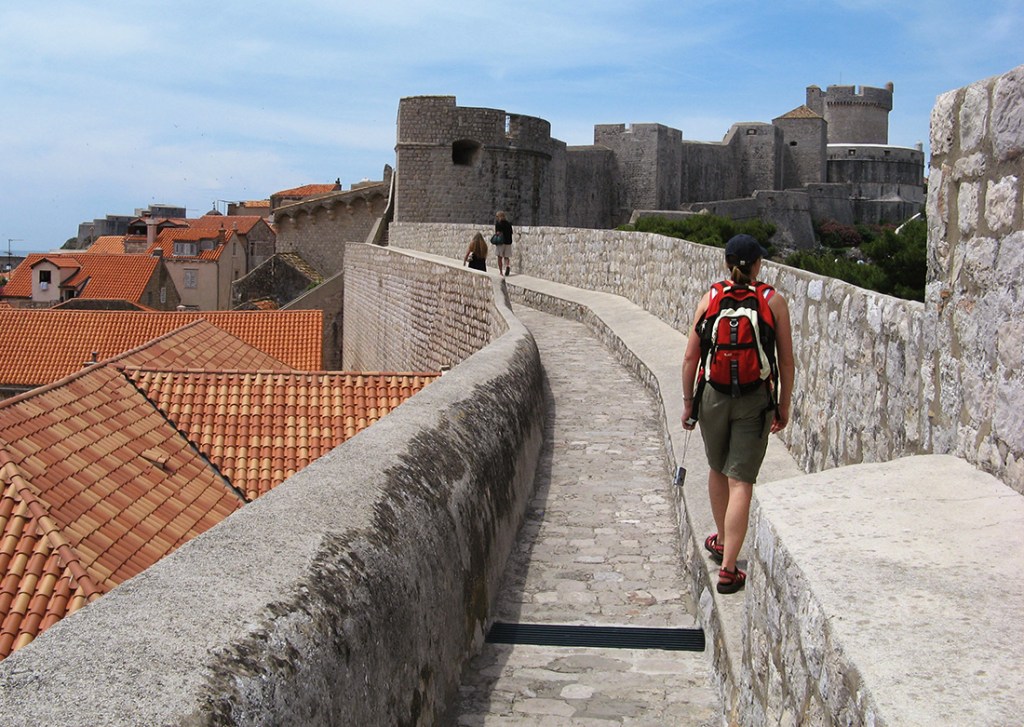
Completed in the 16th century, the stone walls of Dubrovnik’s Old Town make for a fascinating window into Croatian history.
Croatia boasts a solid system of mountain accommodations. When hiking, especially in the Velebit Range, take advantage of these dwellings, which range from staffed and serving basic food (mountain huts) or unstaffed (mountain shelters). These are also excellent places to learn about the trails from locals.
Key Phrases
The language in Croatia is Croatian, which is a Slavic tongue very similar to Serbian, Bosnian and Montenegrin. Spellings can be intimidating but quite phonetic and each letter is pronounced. Croats are generally great with other languages and it is common to meet coastal folks who speak English, Italian and German. Nearly everyone under 50 speaks some English.
- Dobro došli (doh-bro dosh-lee): Welcome
- Živjeli (jee-veh-lee): Cheers
- Hvala (ha-va-la): Thank you
- Dobar dan (doh-bar dahn): Good day
- Doviđenja (doh-vee-jeh-nyah): Goodbye
